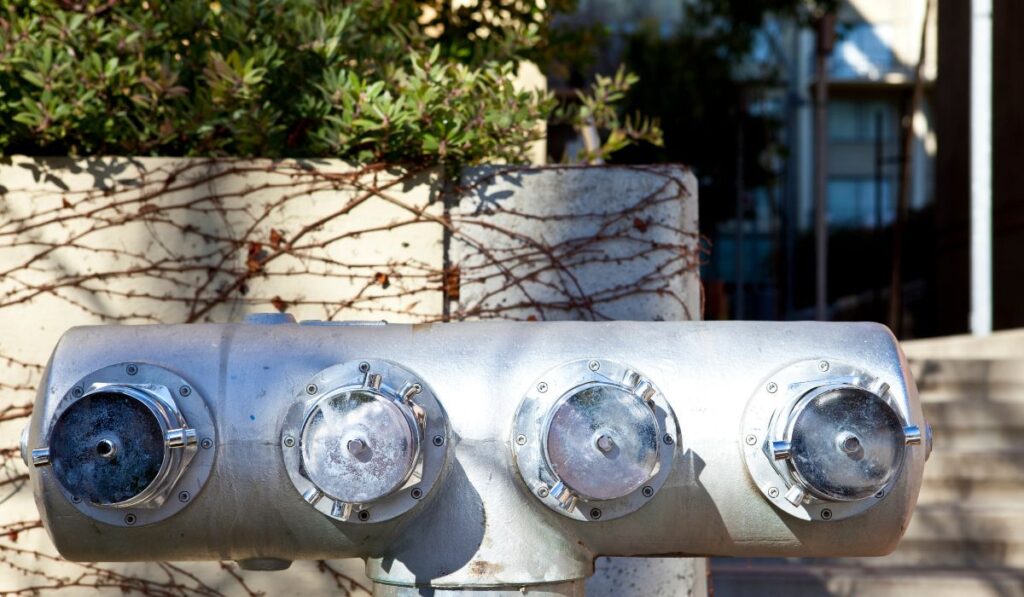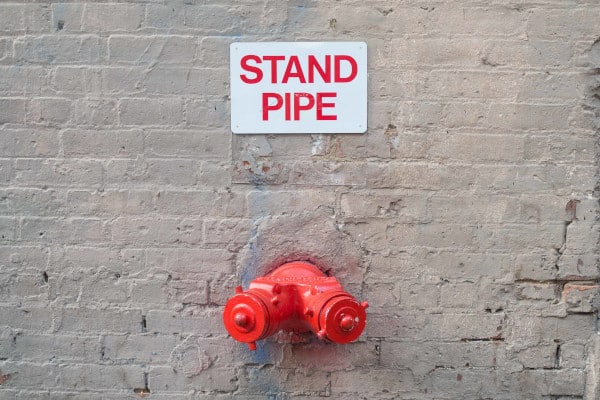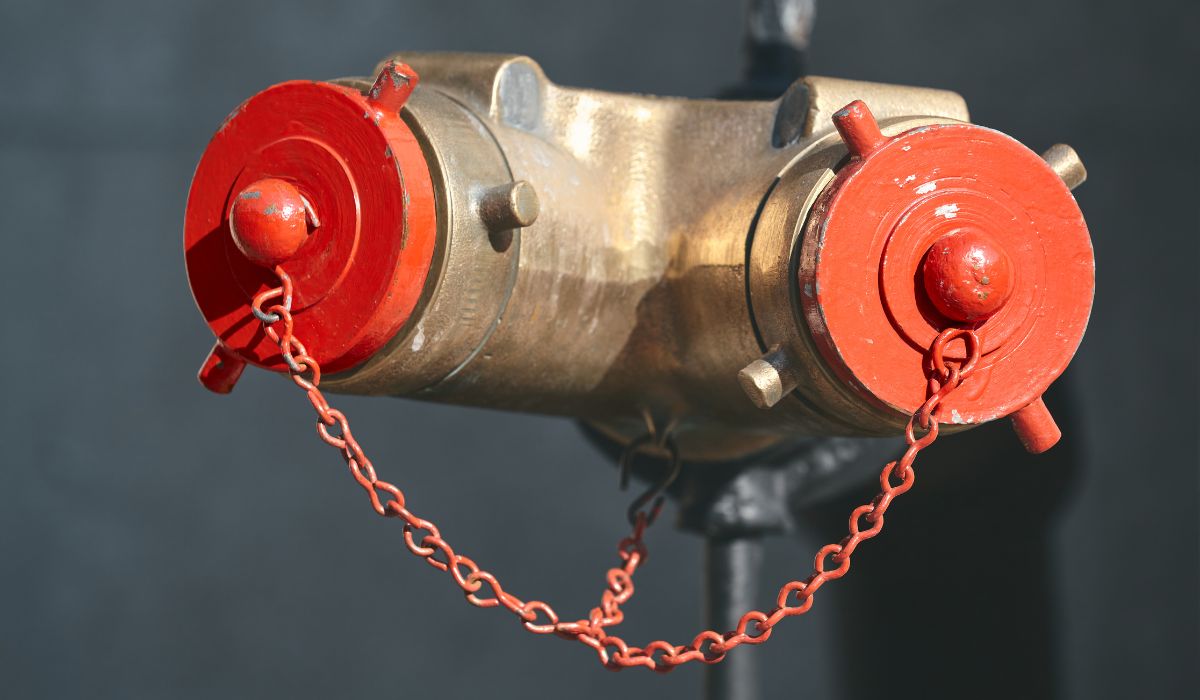A fire standpipe is a system of pipes designed to provide water for firefighting within buildings. It helps firefighters combat fires more effectively.
Fire standpipes are crucial components of a building’s fire protection system. They ensure quick and efficient water delivery to multiple floors, aiding firefighting efforts. Standpipes come in various classes, each designed for specific building types and firefighting needs. Class I standpipes are for professional firefighters, while Class II and III systems are for both firefighters and trained building occupants.
Regular maintenance and inspections are vital to ensure their reliability. Properly functioning fire standpipes can significantly reduce fire damage, save lives, and protect property. Understanding and maintaining these systems is essential for building safety compliance.

Introduction To Fire Standpipes
A fire standpipe is a crucial part of a building’s fire protection system. It provides a reliable water source for firefighters during a fire. Understanding its components and importance enhances fire safety awareness.
Importance In Fire Safety
Fire standpipes play a vital role in fire safety. They ensure a ready supply of water during emergencies. This can make the difference between life and death. Firefighters rely on standpipes to combat fires swiftly. They reduce the time taken to set up external water sources. This quick response can prevent fire escalation.
Basic Components
Fire standpipes have several key components:
- Water Supply: Provides the water needed for firefighting.
- Standpipe Riser: A vertical pipe that carries water to different building levels.
- Hose Connections: Points where firefighters attach their hoses.
- Pressure Regulating Devices: Control water pressure in the system.
These components work together to ensure efficient fire control. Understanding each part helps in maintaining the system.
Types Of Fire Standpipes
Fire standpipes are essential for fighting fires in buildings. They are part of the fire protection system. There are three main types of fire standpipes. Each type serves a unique purpose and has specific features.
Class I Systems
Class I Systems are designed for use by firefighters. They deliver a high volume of water. These systems have 2.5-inch hoses. They are powerful and effective. Class I systems are found in large buildings. They are installed in stairwells and near exits. This ensures easy access during emergencies.
Class Ii Systems
Class II Systems are for trained building occupants. They have smaller, 1.5-inch hoses. These systems provide a moderate water supply. They are used for quick response before firefighters arrive. Class II systems are found in public buildings. They are installed in hallways and common areas.
Class Iii Systems
Class III Systems combine features of Class I and II. They have both 2.5-inch and 1.5-inch hoses. These systems can be used by firefighters and trained occupants. Class III systems offer flexibility. They are installed in large complexes and buildings. They provide a comprehensive fire protection solution.
How Fire Standpipes Work
Understanding how fire standpipes work is essential for fire safety. These systems deliver water to fight fires in tall buildings. They ensure firefighters have quick access to water, saving time and lives.
Water Supply Mechanism
The water supply mechanism is the backbone of a fire standpipe. Water enters the system from a dedicated source. This could be a municipal water supply or a storage tank. The water then flows through pipes to reach various floors of the building.
- Municipal Water Supply: Direct connection to city water.
- Storage Tank: Water stored in a tank for emergencies.
Firefighters connect hoses to outlets on different floors. These outlets are called hose connections or hose valves. This setup allows them to access water quickly.
Pressure Regulation
Pressure regulation is crucial in fire standpipes. Water pressure must be consistent to be effective. High-rise buildings need regulated pressure to ensure water reaches upper floors.
Pressure-regulating devices are installed in the system. These devices include:
- Pressure-Reducing Valves: These lower the pressure in the system.
- Pressure-Sustaining Valves: These maintain the necessary pressure levels.
Proper pressure regulation ensures that firefighters can rely on a steady flow of water. This makes it easier to control and extinguish fires.
| Component | Function |
|---|---|
| Pressure-Reducing Valves | Lower system pressure for safety |
| Pressure-Sustaining Valves | Maintain necessary pressure levels |
Understanding these aspects of fire standpipes helps in maintaining a safe environment. Proper water supply and pressure regulation are key to an effective firefighting effort.
Installation Requirements
Installing a fire standpipe system is crucial for building safety. Proper installation ensures effective fire suppression. Below are key installation requirements, including building codes and location considerations.
Building Codes
Fire standpipe installation must comply with local building codes. These codes specify the system’s design and construction. Compliance ensures the system’s reliability.
Refer to the National Fire Protection Association (NFPA) standards. NFPA 14 outlines the installation of standpipes. Always consult your local fire department for guidance.
Location Considerations
Placement of standpipes within a building is critical. They should be easily accessible to firefighters. Standpipes are usually located in stairwells.
Ensure the standpipes are within reach of fire hoses. They should cover all floors and areas effectively. Proper placement can save lives and property.
| Location | Requirement |
|---|---|
| Stairwells | One standpipe per stairwell |
| High-rise buildings | Standpipes every 100 feet |
| Parking garages | Standpipes near entrances |
- Accessibility: Ensure standpipes are not obstructed.
- Visibility: Clearly mark the standpipe locations.
- Maintenance: Regularly inspect and maintain the system.
Proper installation of fire standpipes is essential. Follow the building codes and location considerations. This ensures an effective fire suppression system.
Maintenance And Inspection
Maintaining and inspecting a fire standpipe system is crucial for safety. Regular checks ensure the system functions properly during emergencies. Here are key aspects of maintenance and inspection.
Routine Checks
Routine checks should be conducted monthly. Inspect all valves and hoses for any signs of damage or wear. Ensure that the standpipe is free from obstructions.
- Visual Inspection: Look for leaks, corrosion, and physical damage.
- Pressure Check: Ensure the system maintains proper pressure levels.
- Valve Operation: Open and close valves to confirm smooth operation.
Common Issues
Several common issues can affect fire standpipe systems. Identifying these problems early is essential.
| Issue | Description |
|---|---|
| Leaks | Water leakage due to damaged pipes or fittings. |
| Corrosion | Rust can weaken pipes, causing potential failures. |
| Obstructions | Debris can block water flow, reducing system effectiveness. |
Address these issues promptly to maintain system reliability. Regular maintenance and inspection can prevent these problems.
Advantages Of Fire Standpipes
Fire standpipes offer many advantages in firefighting and safety. They help firefighters combat fires quickly and protect building occupants.
Enhanced Firefighting Efficiency
A fire standpipe system provides a reliable water source throughout a building. Firefighters can connect their hoses directly to the standpipe outlets. This setup saves crucial time during emergencies.
Standpipes reduce the need for dragging long hoses through buildings. This results in faster and more effective firefighting. Firefighters can access water on every floor, including hard-to-reach areas.
Standpipes ensure consistent water pressure. This is essential for extinguishing fires quickly. The reliable water flow helps control fires before they spread.
Improved Safety For Occupants
Fire standpipes improve safety for building occupants. They help control fires, reducing the risk of smoke and heat exposure. This gives people more time to evacuate safely.
Standpipes are often connected to automatic sprinkler systems. This combination enhances overall fire protection. Sprinklers can activate quickly to suppress fires and minimize damage.
Emergency personnel can use standpipes to fight fires while evacuations occur. This coordinated effort ensures that occupants have a safer escape route. Fire standpipes play a key role in protecting lives and property.
Challenges And Limitations
Fire standpipes are crucial for firefighting, but they have challenges and limitations. Understanding these challenges helps in maintaining a reliable fire safety system.
Potential Failures
Fire standpipes can face various potential failures that compromise their effectiveness:
- Corrosion: Pipes can corrode over time, leading to leaks.
- Blockages: Debris and rust can block the pipes.
- Valve Malfunction: Valves may fail to open or close properly.
- Pressure Issues: Low pressure can hinder water flow.
Regular inspections and maintenance are crucial to prevent these failures. Ensuring that the system is always in good working condition is vital for safety.
Cost Implications
Installing and maintaining fire standpipes come with significant cost implications:
| Cost Factor | Details |
|---|---|
| Initial Installation | High upfront costs due to materials and labor. |
| Maintenance | Regular checks and repairs add ongoing expenses. |
| Upgrades | Upgrading old systems requires additional investment. |
Budgeting for these costs is essential for building owners. Neglecting maintenance can lead to even higher costs due to system failures.

Future Innovations
The world of fire safety is evolving rapidly. Future innovations in fire standpipes promise enhanced safety and efficiency. These advancements focus on smarter systems and better materials.
Smart Monitoring Systems
Smart monitoring systems are the future of fire safety. These systems use sensors and IoT technology to track standpipe performance in real-time.
- Real-time alerts: Sensors detect pressure drops and send alerts instantly.
- Data analytics: Collect data to predict maintenance needs and prevent failures.
- Remote control: Technicians can control and monitor systems from anywhere.
Smart monitoring ensures quick response times and reduces risks.
Improved Materials
Advances in materials science are making standpipes more durable and efficient.
| Material | Benefits |
|---|---|
| Composite materials | Lighter, stronger, and more resistant to corrosion. |
| Advanced polymers | Better flexibility and impact resistance. |
| High-grade steel | Enhanced durability and fire resistance. |
These materials extend the lifespan of standpipes and reduce maintenance costs.

Credit: www.sprinklermatic.com
Frequently Asked Questions
What Does A Fire Standpipe Do?
A fire standpipe provides firefighters with easy access to water in a building during a fire emergency. It ensures quicker firefighting response.
What Is The Difference Between A Standpipe And A Fire Hydrant?
A standpipe provides water inside buildings for firefighting. A fire hydrant supplies water externally for fire engines.
What Is The Difference Between A Fire Riser And A Standpipe?
A fire riser connects the water supply to the sprinkler system. A standpipe supplies water directly to fire hoses.
What Is The Purpose Of The Stand Pipe?
A stand pipe provides a vertical conduit for water in firefighting systems. It ensures quick access to water for fire suppression.
Conclusion
Understanding fire standpipes is crucial for building safety. They provide an efficient means to combat fires. Regular maintenance ensures optimal performance. Awareness and proper usage can save lives and property. Stay informed to enhance your safety measures. Fire standpipes are an essential component in fire protection systems.

I’m Abdus Sobur, a highly skilled and professional Fire Safety Officer with a passion for safeguarding lives and property. Over the course of my career, I’ve conducted numerous successful fire safety audits, earning a reputation for excellence in ensuring public safety.
In addition to my role as a Fire Safety Officer, I’m also dedicated to raising awareness about the importance of fire safety. Through my blog, I share insights into the functions of different fire safety equipment, aiming to empower individuals with the knowledge they need to protect themselves and their communities.
I’m driven by a deep commitment to promoting fire safety awareness and preventing fire-related incidents.

